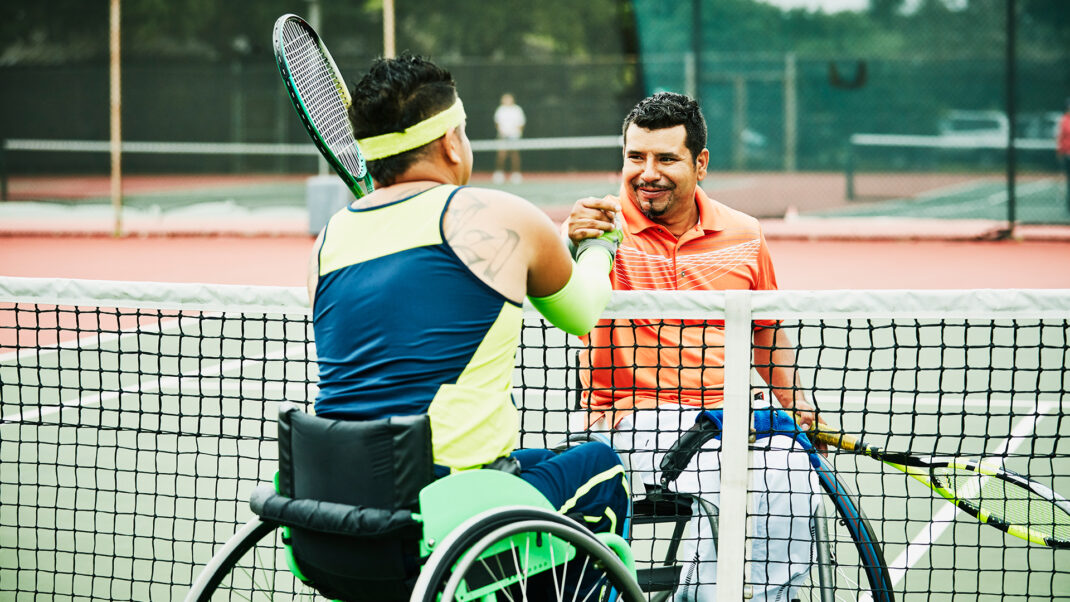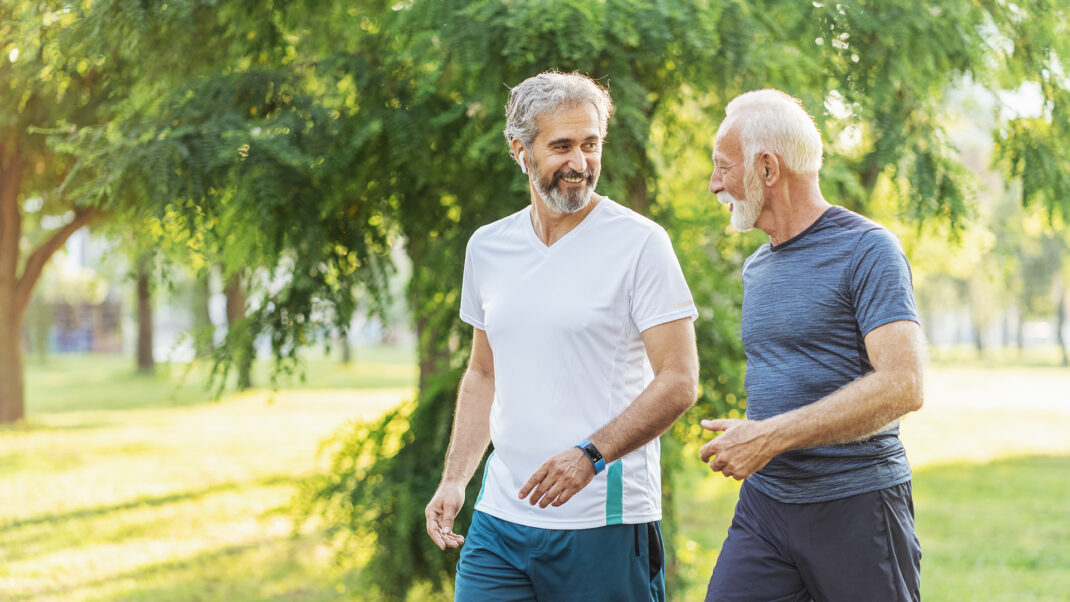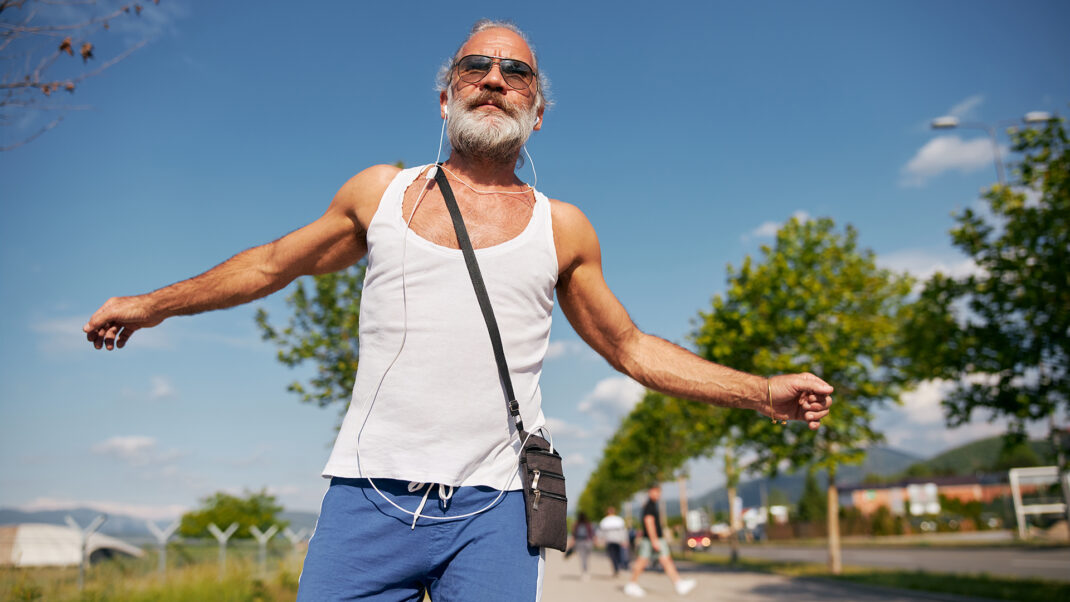Young At Heart
How to Preserve Your Health With Active Living (At Any Age!)
Are you 40 years old? 60 years old? 80?
Whatever your age, it does not have to stand in the way of living a healthy, active life. In fact, research has increasingly shown that the true secret to living “well” at any age is regular physical activity—and that exercise will improve your health whether you are nine years old or 90!
There was a time when aging was associated with “taking it easy.” Today, we know that taking it too easy can be dangerous—especially when you are over 40. Increasing years bring increased risk for a variety of diseases, including hypertension, heart disease and diabetes. One of the best things you can do to protect yourself and preserve a high quality of life is to get moving, and stay active for the rest of your life.
Remember if you used to be physically active, now is the time to get back in the habit. If you’ve never been active, it’s never too late to start!
Helping you get and stay active is what IDEA is all about. As the source for reliable quality health and fitness information, our mission is to help people live longer, healthier and happier lives through regular activity and healthy lifestyle habits.
Staying Active, Staying Young
Is physical activity the “fountain of youth”? It may be as close to it as we can get! Experts agree that there are few things in life that can bring as many health-preserving benefits as regular physical. In fact, many of the health problems we think of as “inevitable” effects of “aging” may actually be due to inactivity and disuse.
A good example is the weight gain many men and women experience with age.
Much of this gain is actually due to loss of muscle and a decrease in metabolism, according to physiologist Ralph La Forge, MS. However, both muscle loss and a slowing metabolism can be counteracted with exercise! Some experts believe that as much as 70% of the weight gain associated with aging is due to sedentary living—and can be avoided with regular activity.
Forget “No Pain, No Gain”
The days when physical activity meant physical punishment are gone. As IDEA fitness professional Kate Larsen says, today’s exercise motto is “Not fun, not done!” What’s important is that you find activities you enjoy and feel comfortable doing, whether it’s walking, tennis, dancing, hiking, gardening or playing with children and grandchildren (now that will keep you active!).
Researchers have found that it does not take a great deal of exercise to reap a great deal of benefits. See the table below for more details. For example, to offset the weight gain typically associated with menopause, the average woman only needs to walk about approximately 10 miles and strength train for two 20-minute sessions each week.
Beginning even the most basic activity program can bring significant health benefits, including lowered risk of heart disease and hypertension. The American College of Sports Medicine recommends that you accumulate as little as 30 minutes of activity a day most days of the week. And these can be split up into two or even three separate sessions—a 15-minute walk with the dog and a 15-minute stride at the mall are as good as 30 minutes of continuous exercise!
It’s All About How You Feel…
Research has shown that physical activity does much more that strengthen your heart and build your bones—it improves how you feel about yourself and your life. Regular exercise can renew your energy, improve your outlook, and help you sleep better and combat anxiety and depression. And that’s important, because research also shows that the better you feel about yourself and the more effectively you manage stress, the better your overall health is likely to be.
…And How You Live
The price of not being physically active is a high one. As you gradually lose flexibility, endurance, strength, balance, coordination and your ability to move easily and comfortably, your life can be altered dramatically. Climbing stairs, hauling groceries, traveling and enjoying activities with your friends and family can all become more difficult or even impossible. Your attitude and ability to “roll” with life’s ups and downs (both physically and mentally) can be negatively effected by sedentary living.
Health Benefits of Physical Activity
|
CONDITION
|
TYPE OF EXERCISE
|
BENEFITS
|
| Coronary Heart Disease | Aerobic |
Lower blood pressure Reduced cholesterol levels Increased insulin sensitivity Reduced fat weight Increased cardiac function Lower resting heart rate
|
|
Pulmonary Conditions
|
Aerobic
|
Increased vital capacity
|
| High blood pressure | Aerobic | Decrease in systolic blood pressure |
| Osteoporosis | Resistance and weight-bearing |
Stimulation of bone growth Decreased bone loss Fewer musculoskeletal injuries |
| Osteoarthritis | Resistance, aerobic and flexibility |
Increased muscle strength Improved range of motion Better coordination |
| Diabetes | Aerobic |
Increased fat loss Increased insulin receptor sensitivity |
| Obesity | Aerobic and resistance |
Decreased fat weight Improved fat and carbohydrate |
| Psychological health | Aerobic and flexibility |
Reduced stress and anxiety Less depression Enhanced mental outlook and self-esteem |
| Adapted from Barry et. al. 1993; Kligman & Pepin 1992 | ||
12 Tips for Staying Active and Young at Heart
1. Stop smoking! It’s not exercise, but it’s one of the most important things you can do to preserve your health.
2. Eat right. Combining healthy food choices with regular activity is an unbeatable combination.
3. Do not “act your age”! You may find yourself “slowing down” without even realizing it, but do not give in to the temptation. In fact, you can help preserve your balance, coordination, and agility and flexibility skills by cultivating the abandoned art of playing! Go to a park, play hopscotch, climb trees, walk on curbs, use a Hula Hoop, try the monkey bars! Activities like these will help you build the movement skills that conventional activities can’t.
4. Get a thorough pre-exercise assessment. Evaluate your current health, as well as physical capabilities and limitations. Talk to your doctor. Get a general medical evaluation with special attention given to the cardiovascular, breathing, muscular and nervous systems.
5. Understand and clarify your training goals. Why do you want to exercise? A primary goal of many older exercisers is to maintain an independent lifestyle that allows participation in all the activities they enjoy. Exercise is part of the solution, along with diet, adequate rest and a positive outlook.
6. Adjust your cardiovascular training. The generally recommended frequency for aerobic conditioning is three to six times per week. Duration may range from a few minutes (if you are just starting) to 60 minutes of exercise per workout, depending on your fitness level. Cardiovascular improvements have been shown with easy to moderate levels of intensity. Include gradual warm-ups (at least 10-15 minutes) and cool-downs (at least 5-10 minutes). This will put less stress on your heart, muscles and joints.
7. Start strength training! This may be the most important step in slowing the aging process. Strength training can make your bones stronger, improve posture, decrease body fat, help maintain fat loss, decrease your risk for Type II diabetes and improve balance and mobility. Staying strong helps keep you independent and moving confidently! (It is a myth that as you age you lose the ability to get results from lifting weights. Studies have shown that strength improvements can triple in the elderly!)
8. Stretch! Hold stretches for up to 30 seconds and do them in a slow, sustained manner. Never bounce or jerk when stretching. You should feel the stretches in your muscles, not your joints. Do not force a stretch to the point of pain. Before you stretch, make sure you warm up with easy aerobic activity.
9. Age isn’t everything. The characteristics of the “mature adult” vary from person to person. You may be a completely inactive adult or a very active, highly conditioned one. Age alone does not dictate your exercise program! What is appropriate for an active 75-year-old may put a sedentary 37-year-old man at risk for injury!
10. Do something! In addition to a formal exercise program, increase everyday activity. This includes walking, stair climbing, light housework and gardening. Purposely parking your car far away from the shopping mall and walking the added distance helps!
11. Take risks—but use common sense. If you are thinking about in-line skating, make sure you have all of the safety gear and take some lessons! Avoid or modify high-impact activities that hurt your joints or muscles, or that require a high level of coordination or balance. Repeat activities to improve coordination and confidence in performing them. (Even though you should add variety to your workouts, doing the same thing is not always bad.)
12. Enjoy being active! Choose activities that interest you. Ultimately, this desire and enjoyment of exercise is what will keep you healthy for a lifetime.
Get Active—and Stay Young at Heart!
For more information on starting an exercise program, contact an IDEA member group fitness instructor or personal trainer in your area. This information furnished as a consumer education service of IDEA, the Health & Fitness Source, as part of our mission to “Make Fitness Happen” worldwide.
IDEA members may reproduce this information in a business newsletter or in handouts they distribute to their customers and staff as long as the information is reproduced verbatim with no changes or editing. In addition, the author’s byline (where applicable) must be reproduced completely and the IDEA Health & Fitness Association must be credited as the source of the information.
For other uses, contact IDEA Permissions at:
phone: (858) 535-8979
fax: (858) 535-8234
E-mail: [email protected]
10455 Pacific Center Court San Diego, CA 92121-4339





